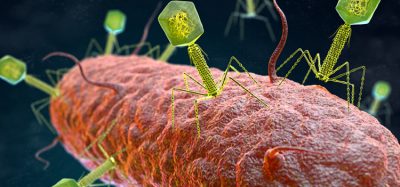The molecular mechanisms of lenacapavir revealed
Posted: 19 February 2024 | Drug Target Review | No comments yet
Researchers discover a mechanism that could be exploited for targeting other viruses that build capsids to hide from host defences.


Led by UNSW Sydney researchers, an international team of scientists have elucidated the molecular mechanisms of lenacapavir, a recent anti-retroviral drug developed by Giliad Sciences to treat human immunodeficiency virus (HIV) infections. Approved by European Union and the US Food and Drug Administration around a year ago, Lenacapavir is the first drug available to patients designed to target the HIV capsid. Their findings could aid the refinement of more effective anti-viral therapies.
The genetic material of HIV is encased in a protein coat. After entering a cell, the protein coat safeguards the virus as it converts its genomic RNA into DNA when it is enroute to the nucleus. Lenacapavir was designed to thwart this protection afforded by the capsid, which is the only approved anti-HIV therapy to do so, being potent and long acting.
Dr Till Böcking, leader of the team alongside Dr David Jacques, commented: “The fact that the capsid plays a central role in multiple stages of the viral life cycle, and therefore represents a really good drug target, is a concept that’s only emerged in recent years.”
Using cell infection studies and single-molecule imaging, the researchers demonstrated how lenacapavir disrupted the HIV life cycle. One theory was that the drug hardens the capsid to lock the virus in, thereby preventing it from establishing infection. However, the researchers observed that the capsid, fortified by the drug, became very brittle.
“What we found was that this hyper-stabilisation actually led to a premature breakage of the capsid, before the virus can finish converting its RNA into DNA,” Dr Böcking explained.
The capsid would rupture in the target cell, before the virus reaches the nucleus, leaving its genetic material exposed to the hostile environment in the host cell cytoplasm. The team worked with non-infectious HIV-like particles produced by cells to study the effect of lenacapavir on individual capsids over time.
One of the study’s lead authors Dr James Walsh added: “With our microscope setup, we can look at the integrity of the capsids. By monitoring the release of fluorescent tags loaded into the capsid, we can work out exactly when it cracks.”
The building of new capsids was also investigated, with the team recreating a process that would take place after newly made copies of the viral genome are bundled up for release from infected cells. They discovered that lenacapavir sabotaged capsid integrity at this phase of the HIV life cycle by accelerating the capsid construction to force construction errors. The deformed capsids cannot close correctly and fail to shield the viral genome from attack.
This study settles the debate over whether capsid-targeting drugs strengthen or weaken the capsid and shows that the uncovered mechanism could be exploited for targeting other viruses that build capsids to shelter from host defences.
This study was published in eLife.
Related topics
Antiretroviral Therapies, Molecular Biology, Virology
Related conditions
HIV
Related organisations
UNSW Sydney







